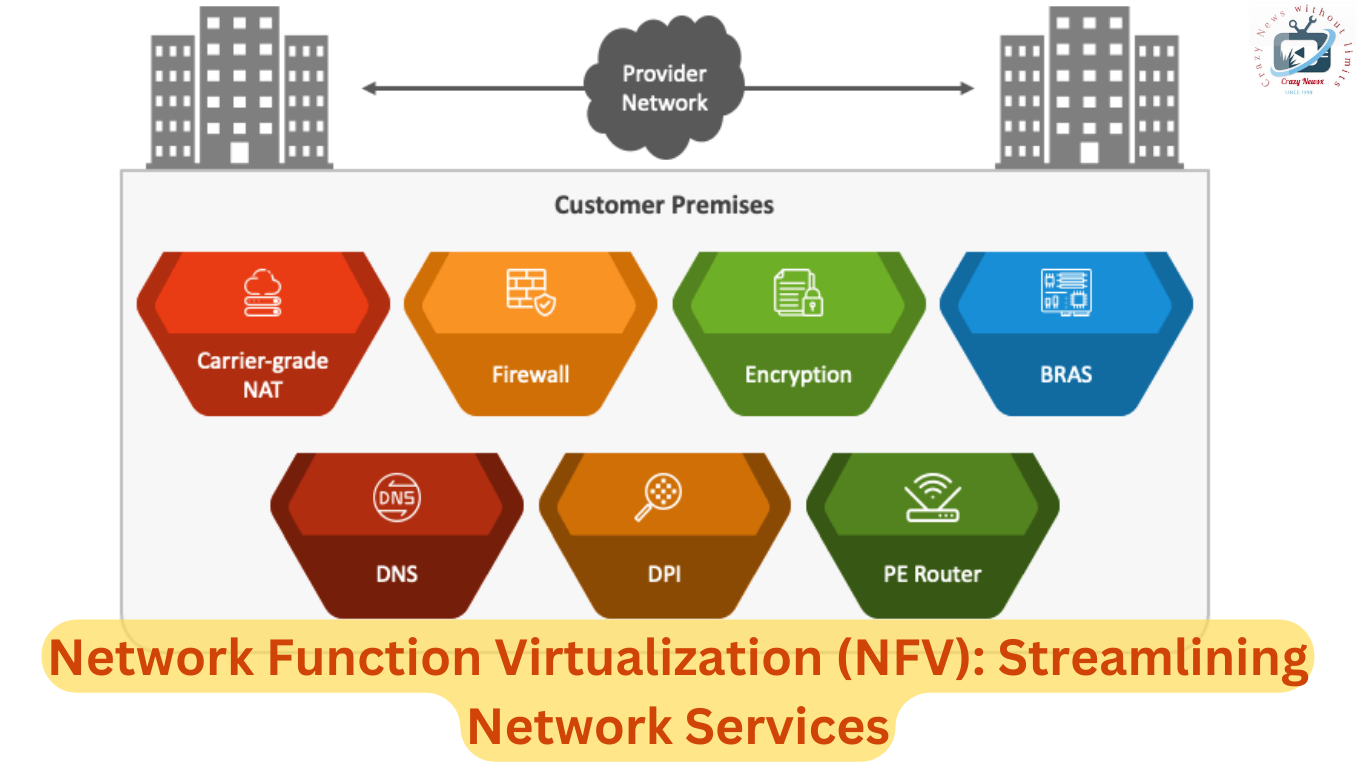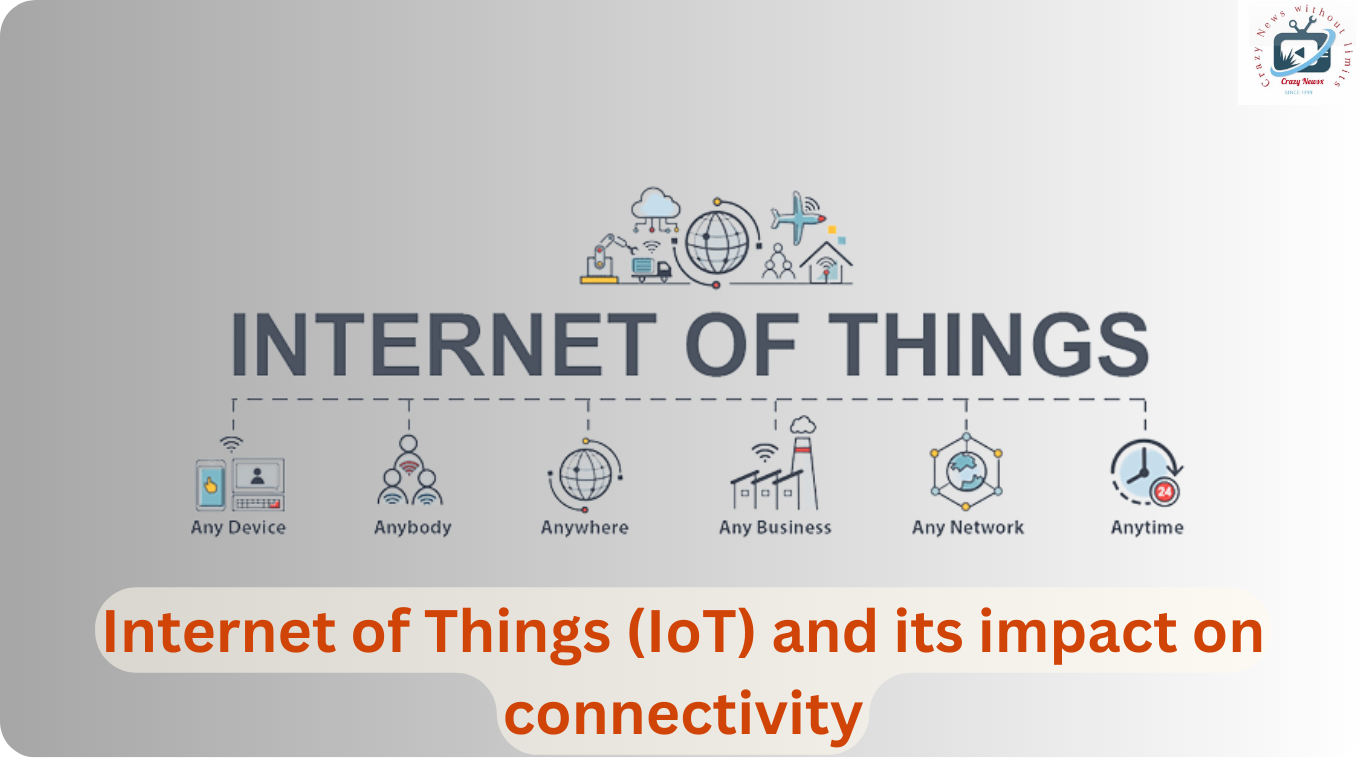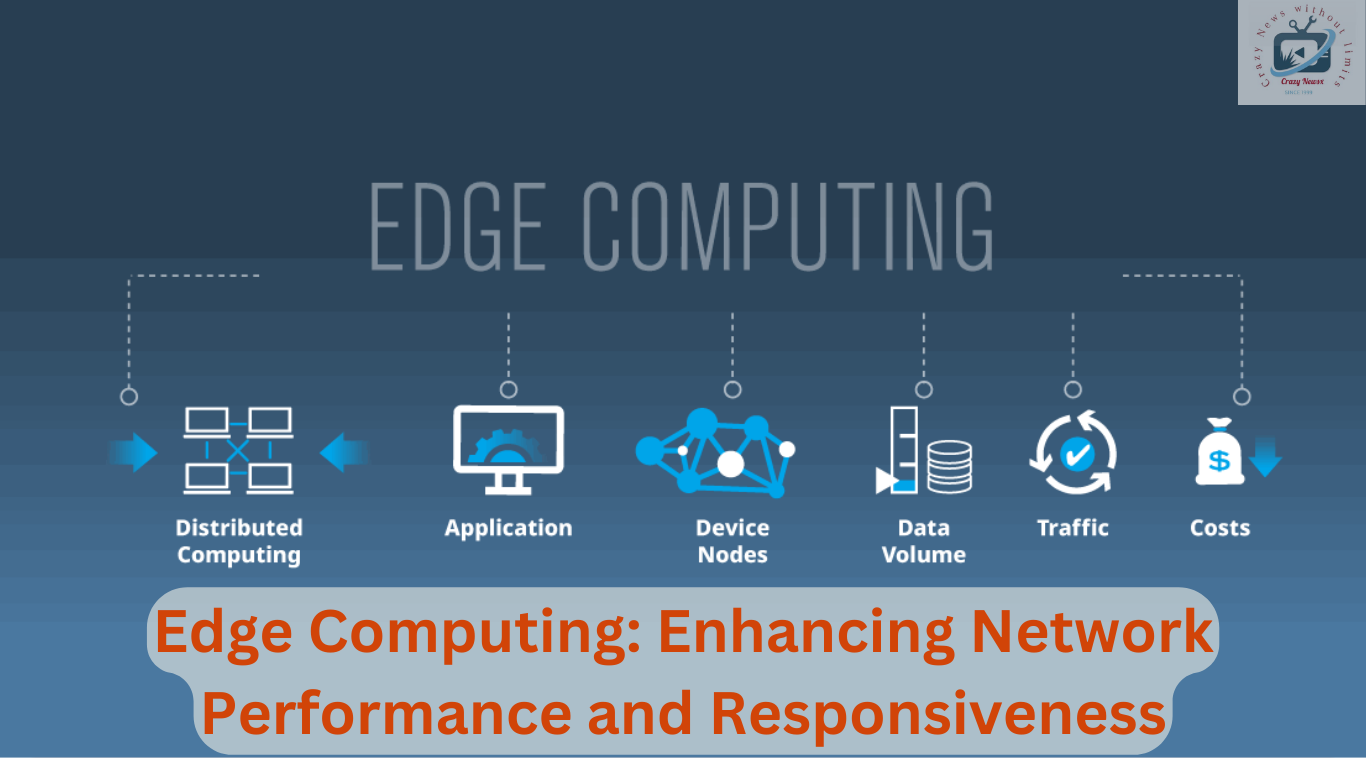The world is more connected than ever before, and it’s all thanks to advanced networking concept & technologies.
From smartphones and laptops to smart homes and autonomous cars, we rely on networking and data transfer to power our daily lives. However, as technology continues to evolve, new concepts and technologies are emerging that will revolutionize the way we connect and communicate.
In this blog post, we will explore some of the most advanced networking concepts and technologies that are changing the game. From edge computing and software-defined networking to 5G and the Internet of Things (IoT), we will take a deep dive into these advanced networking technologies and explore how they are shaping the future of connectivity. Whether you are a tech enthusiast or someone who simply wants to stay up-to-date on the latest trends, this post is for you.
Introduction: The importance of connectivity in the modern world
In today’s fast-paced, technology-driven world, connectivity has become an integral part of our daily lives. From smartphones to smart homes, from e-commerce to remote work, the importance of staying connected cannot be overstated. It has revolutionized the way we communicate, collaborate, and access information.
Connectivity plays a crucial role in bridging distances and breaking down barriers. It allows us to connect with people from all corners of the world, enabling seamless communication and fostering global collaboration. Whether it’s video conferencing with colleagues in different time zones, or staying connected with loved ones across continents, the ability to instantly connect has transformed the way we interact with one another.
Furthermore, connectivity has revolutionized the way businesses operate. E-commerce has skyrocketed, allowing businesses to reach customers beyond geographic boundaries. The ease of online shopping and instant access to a myriad of products and services has reshaped consumer behavior. Connectivity has also paved the way for remote work, enabling individuals to work from anywhere and collaborate with colleagues in real-time.
In addition to its impact on communication and business, connectivity has also transformed education, healthcare, transportation, and various other sectors. It has bridged the gap between students and educators, facilitating online learning and access to educational resources. Telemedicine has gained prominence, allowing patients to receive medical consultations remotely, especially in underserved areas. Connected vehicles and smart transportation systems have enhanced safety and efficiency on the roads.
As we embark on this journey to explore advanced networking concepts and technologies, it is crucial to recognize the significance of connectivity in shaping our present and future. From the Internet of Things (IoT) to 5G networks, from cloud computing to artificial intelligence, the world of connectivity is continually evolving, promising new possibilities and opportunities.
Join us as we delve deeper into the world of advanced networking concepts and technologies, unraveling the intricacies and exploring the transformative potential they hold. Together, let’s unravel the revolutionizing power of connectivity and its profound impact on our interconnected world.
Evolution of networking: From basic to advanced Networking concepts
The evolution of networking has been nothing short of remarkable. From its humble beginnings as a basic connection between two computers, networking has evolved into a complex and sophisticated system that powers the digital age we live in today.
In the early days, networking was primarily focused on connecting computers within a local area network (LAN). This allowed for file sharing, printer access, and basic communication between devices. However, as technology advanced and the demand for connectivity grew, so did the need for more advanced networking concepts.
The introduction of wide area networks (WANs) revolutionized the way businesses operated. WANs enabled organizations to connect multiple LANs across different geographical locations, facilitating seamless communication and data transfer. This opened up new possibilities for collaboration, remote work, and global connectivity.
But the evolution didn’t stop there. As the internet became ubiquitous, networking concepts expanded even further. The emergence of cloud computing brought about the concept of virtual networks. Virtual private networks (VPNs) allowed for secure connections over public networks, enabling remote access to private resources. Software-defined networking (SDN) emerged as a game-changer, shifting the control of network infrastructure from hardware to software, making networks more agile, flexible, and scalable.
Today, networking concepts continue to evolve with the rise of emerging technologies like 5G, Internet of Things (IoT), and edge computing. These advancements are revolutionizing connectivity by enabling faster speeds, greater capacity, and seamless integration of devices and systems.
As we delve deeper into advanced networking concepts and technologies, it’s important to understand the journey that has brought us here. The evolution of networking has been driven by the growing needs of businesses and individuals for faster, more reliable, and secure connectivity. By exploring these advancements, we can better grasp the potential of networking in shaping the future of technology and society as a whole.
Network virtualization: Enhancing flexibility and scalability
In today’s rapidly evolving technological landscape, network virtualization has emerged as a game-changing concept that is revolutionizing the way businesses approach connectivity. Gone are the days of traditional physical networks that were rigid and constrained by hardware limitations. With network virtualization, organizations can now enhance their flexibility and scalability to unprecedented levels.
At its core, network virtualization involves decoupling the network functionality from its underlying hardware infrastructure. This means that instead of relying solely on physical switches, routers, and cables, businesses can create virtual networks that exist independently of the physical infrastructure. These virtual networks can be easily provisioned, modified, and scaled as per the organization’s requirements, leading to enhanced agility and cost-effectiveness.
One of the key benefits of network virtualization is its ability to consolidate multiple physical networks into a single virtual network. This not only simplifies network management but also reduces the hardware footprint, resulting in significant cost savings. Additionally, virtual networks can be dynamically allocated and shared across different departments or business units, allowing for efficient resource utilization and improved collaboration.
Scalability is another area where network virtualization truly shines. Traditional networks often face limitations when it comes to scaling up or down based on changing demands. However, with virtual networks, organizations can easily scale their network resources on-demand. Whether it’s adding new virtual machines, expanding network capacity, or accommodating increased traffic, network virtualization offers the flexibility to adapt and grow without disrupting the existing infrastructure.
Furthermore, network virtualization enables the concept of software-defined networking (SDN), where network management and control are centralized and automated through software. This centralized control allows for greater visibility, easier troubleshooting, and the ability to implement policies and security measures consistently across the entire network, regardless of its physical location.
In conclusion, network virtualization is a transformative concept that is reshaping the connectivity landscape. By decoupling network functionality from the underlying hardware infrastructure, organizations can achieve enhanced flexibility, scalability, and cost-efficiency. As businesses continue to embrace advanced networking concepts and technologies, network virtualization will undoubtedly play a pivotal role in driving innovation and unlocking new possibilities.
Software-defined networking (SDN): Centralized control and automation

Software-defined networking (SDN) is a groundbreaking concept that is revolutionizing the way networks are managed and operated. Traditionally, network infrastructure has been built using hardware devices with static configurations and limited flexibility. However, with SDN, the control and management of the network are decoupled from the underlying hardware, allowing for centralized control and automation.
At the core of SDN is the separation of the control plane and data plane. The control plane, which handles the network’s decision-making process, is abstracted and centralized in a software-based controller. This controller acts as a brain for the network, providing a holistic view of the network topology and allowing administrators to define and enforce policies centrally.
One of the key advantages of SDN is its ability to automate network provisioning and management tasks. By leveraging programmable interfaces and APIs, administrators can define policies and configurations in software and push them to the network devices automatically. This eliminates the need for manual configuration on individual devices, reducing the risk of human errors and significantly speeding up network deployment and changes.
Another significant benefit of SDN is its agility and flexibility. With the centralized control provided by the SDN controller, network administrators can dynamically adjust the network’s behavior in response to changing requirements or traffic patterns. This flexibility enables organizations to optimize their network resources, improve application performance, and efficiently handle surges in demand.
Moreover, SDN opens up new possibilities for innovation and customization in networking. By exposing APIs and providing a programmable infrastructure, SDN enables the development of innovative applications and services that can directly interact with the network. This allows for the creation of tailored solutions, such as network slicing for multi-tenant environments or application-specific optimizations.
While SDN offers significant advantages, it is important to note that its implementation requires careful planning and consideration. Organizations need to evaluate their specific requirements, assess the compatibility of their existing infrastructure, and invest in the necessary training and expertise to effectively deploy and manage an SDN environment.
In conclusion, software-defined networking (SDN) represents a paradigm shift in networking, offering centralized control, automation, agility, and customization. As organizations strive to keep up with the ever-increasing demands for connectivity, SDN provides a powerful tool to streamline network operations, improve efficiency, and unlock new possibilities for innovation.
Network function virtualization (NFV): Streamlining network services

In today’s digital age, where connectivity is paramount, network function virtualization (NFV) emerges as a game-changing technology that revolutionizes the way network services are delivered. Traditionally, network functions such as routing, firewalls, and load balancing were achieved through dedicated hardware appliances, resulting in complex and expensive network infrastructures.
However, NFV transforms this landscape by decoupling network functions from proprietary hardware and instead virtualizing them to run on standard servers. By leveraging virtualization technologies, NFV enables the consolidation of multiple network functions onto a single physical device, simplifying network management and reducing costs.
One of the key benefits of NFV is its ability to streamline network services. With traditional networking concepts , deploying new network services or making changes to existing ones can be a time-consuming and resource-intensive process. However, with NFV, network services can be rapidly provisioned, scaled, and customized to meet specific business requirements. This flexibility and agility provided by NFV allow organizations to adapt quickly to changing network demands, enhancing their operational efficiency.
Moreover, NFV brings inherent scalability to network services. As virtualized network functions can be dynamically instantiated and allocated resources on-demand, scaling network services becomes seamless and elastic. This scalability ensures optimal performance and resource utilization, allowing organizations to efficiently handle traffic spikes and accommodate growing network demands.
Additionally, NFV offers improved service orchestration and management capabilities. Through centralized management and software-defined networking (SDN) principles, NFV enables automated provisioning, configuration, and monitoring of network services. This centralized control simplifies network operations, enhances visibility into network performance, and enables rapid troubleshooting, leading to enhanced service reliability and reduced downtime.
In conclusion, network function virtualization (NFV) is revolutionizing connectivity by streamlining network services. By virtualizing network functions, organizations can achieve greater agility, scalability, and cost-efficiency in delivering network services. Embracing NFV enables businesses to adapt to the evolving networking landscape, unlock new opportunities, and stay ahead in the era of advanced networking concepts and technologies.
Internet of Things (IoT) and its impact on connectivity

The Internet of Things (IoT) has emerged as a game-changing concept in the world of connectivity. In simple terms, IoT refers to the interconnected network of physical devices, vehicles, appliances, and other objects embedded with sensors, software, and connectivity capabilities that enable them to collect and exchange data.
IoT has transformed the way we interact with our surroundings, revolutionizing various industries such as healthcare, manufacturing, transportation, and agriculture. The impact of IoT on connectivity cannot be overstated.
One of the key benefits of IoT is its ability to enable seamless communication and data exchange between devices. This allows for the creation of smart homes, smart cities, and even smart industries. Imagine a future where your refrigerator automatically orders groceries when it detects you are running low, or where streetlights adjust their brightness based on real-time traffic conditions. These are just a few examples of how IoT is transforming our daily lives.
Furthermore, IoT has opened up a world of possibilities for businesses. By leveraging the power of IoT, companies can gather vast amounts of data in real-time, enabling them to make informed decisions, optimize processes, and enhance customer experiences. For instance, in manufacturing, IoT sensors can monitor equipment performance, predict maintenance needs, and even enable self-healing systems, leading to increased productivity and cost savings.
However, with the rapid growth of IoT, there are also challenges to address. Security and privacy concerns become paramount as more devices are interconnected, raising questions about data protection and potential vulnerabilities. It is crucial that proper protocols and safeguards are in place to mitigate these risks and ensure a secure and reliable IoT ecosystem.
As we continue to explore and advance in the realm of IoT, the potential for connectivity and innovation is immense. From connected cars to smart healthcare solutions, the possibilities are endless. It is essential for businesses, governments, and individuals to stay informed and adapt to this rapidly evolving landscape to fully harness the benefits of IoT and shape a connected future that enhances our lives and transforms industries.
Edge computing: Enhancing network performance and responsiveness

Edge computing is revolutionizing the way we think about network performance and responsiveness. Traditionally, data processing and storage have been centralized in large data centers, resulting in delays and latency issues. However, with the emergence of edge computing, these challenges are being addressed in a remarkable way.
Edge computing involves moving data processing and storage closer to the source of data generation, at the network edge. This allows for faster response times and improved network performance. By distributing computing resources across multiple locations, edge computing reduces the distance data needs to travel, minimizing latency and enabling real-time data analysis.
One of the key benefits of edge computing is its ability to support applications that require immediate processing and low latency. Consider the example of autonomous vehicles. These vehicles generate a massive amount of data that needs to be processed and analyzed in real-time to ensure safe and efficient operation. With edge computing, the data can be processed locally, within the vehicle itself or nearby, reducing the reliance on distant data centers and enabling faster decision-making.
Moreover, edge computing is particularly advantageous in scenarios where network connectivity is limited or unreliable. By decentralizing processing capabilities, edge computing enables devices to function even when they are not connected to the cloud or a central server. This is especially crucial in industries such as healthcare, where uninterrupted connectivity is essential for critical applications like remote patient monitoring or emergency response systems.
In addition to enhancing network performance and responsiveness, edge computing also offers improved data privacy and security. Since data is processed and stored closer to the source, there is reduced reliance on transmitting sensitive information over long distances or through potentially vulnerable connections. This decentralized approach can help mitigate the risks associated with data breaches and unauthorized access.
As technology continues to advance, edge computing is expected to play a vital role in supporting emerging applications such as Internet of Things (IoT), artificial intelligence, and augmented reality. By bringing computing power to the network edge, organizations can unlock new possibilities, drive innovation, and deliver enhanced user experiences.
In conclusion, edge computing represents a significant advancement in networking concepts and technologies. By enhancing network performance, reducing latency, and enabling real-time data analysis, it opens up a world of possibilities for various industries. As more organizations embrace edge computing, we can expect to witness a paradigm shift in how we connect and interact with the digital world.
Cloud networking: Leveraging the power of the cloud

Cloud networking has emerged as a game-changer in the world of advanced networking concepts and technologies. By leveraging the power of the cloud, businesses can revolutionize their connectivity and unlock a new realm of possibilities.
Traditionally, networking infrastructure required substantial investments in hardware, maintenance, and dedicated IT teams. However, with cloud networking concepts , businesses can transcend these limitations and enjoy a more scalable, flexible, and cost-effective solution.
One of the key advantages of cloud networking concepts is its ability to centralize network management and configuration. Instead of managing individual network devices, businesses can now control their entire network infrastructure from a centralized cloud-based platform. This not only simplifies network administration but also enables quick and efficient deployment of network changes across multiple locations or branches.
Furthermore, the cloud offers unparalleled scalability. As businesses grow, their networking needs can rapidly evolve. With cloud networking concepts , scaling up or down becomes a seamless process. Whether it’s provisioning additional bandwidth, adding new network resources, or expanding to new locations, the cloud provides the agility to adapt to changing business requirements.
Another significant benefit of cloud networking concepts is enhanced security. By moving network infrastructure to the cloud, businesses can take advantage of advanced security features and protocols provided by cloud service providers. This includes robust firewalls, intrusion detection and prevention systems, and encrypted connections, ensuring that sensitive data remains protected against potential threats.
Additionally, cloud networking concepts facilitates seamless integration with other cloud-based services and applications. This opens up a world of possibilities for businesses to leverage advanced technologies such as artificial intelligence, machine learning, and big data analytics. By combining the power of the cloud with networking concepts capabilities, businesses can drive innovation, improve efficiency, and gain a competitive edge in their respective industries.
In conclusion, cloud networking concepts represents a paradigm shift in connectivity, offering businesses a scalable, flexible, and secure solution. By harnessing the power of the cloud, businesses can streamline network management, achieve unprecedented scalability, enhance security, and unlock new opportunities for growth and innovation. Embracing cloud networking is not just about staying ahead of the curve; it is about revolutionizing connectivity and shaping the future of networking concepts .
Conclusion: Embracing advanced networking concepts for a connected future
In conclusion, embracing advanced networking concepts and technologies is essential for paving the way to a connected future. As our world becomes increasingly interconnected, the need for robust and efficient networking concepts solutions becomes paramount.
By embracing advanced networking concepts , businesses can unlock a myriad of opportunities. From enhancing productivity and collaboration to enabling seamless connectivity across devices and locations, advanced networking concepts and technologies have the power to revolutionize how we work and communicate.
The advent of technologies such as 5G, IoT (Internet of Things), and SD-WAN (Software-Defined Wide Area Network) has opened up new avenues for innovation and growth. These technologies offer faster speeds, lower latency, and greater reliability, enabling businesses to leverage data-driven insights and make real-time decisions.
Moreover, advanced networking concepts such as virtualization, network automation, and artificial intelligence bring unprecedented agility and scalability to network infrastructure. By reducing manual intervention, automating processes, and leveraging AI-driven analytics, businesses can optimize network performance, enhance security, and reduce operational costs.
As we look towards the future, the potential of advanced networking concepts to transform industries and drive digital transformation is immense. From smart cities to autonomous vehicles, from telemedicine to immersive virtual experiences, advanced networking concepts will be the backbone that supports these innovations and fuels progress.
It is crucial for businesses and individuals alike to continuously educate themselves and stay abreast of the latest developments in advanced networking. By doing so, they can stay ahead of the curve, adapt to changing technological landscapes, and harness the full potential of connectivity.
In conclusion, by embracing advanced networking concepts and technologies, we can unlock a world of possibilities and shape a future where seamless connectivity and innovation thrive. Let us embrace this revolution and embark on a journey towards a truly connected world.
In conclusion, our exploration of advanced networking concepts and technologies has shed light on the exciting possibilities that lie ahead in revolutionizing connectivity. From SDN and virtualization to IoT and 5G, these advancements have the potential to transform how we connect, communicate, and collaborate in the digital age. As we continue to push the boundaries of technology, it is crucial to stay informed and adapt to these changes, ensuring that we harness their full potential for improved efficiency, scalability, and innovation. The future of connectivity is indeed promising, and by embracing these advanced networking concepts and technologies, we can pave the way for a more connected and empowered world.
Sharing knowledge is a charity of knowledge that constitutes the ways of a beautiful life. – Ehsan Sehgal


